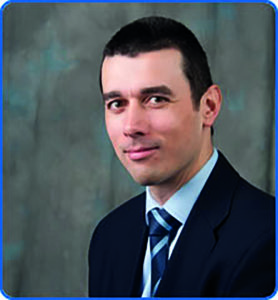
Robert Hinchliffe (University of Bristol, Bristol, UK) shares his excitement to attend the upcoming CX Symposium (26–28 April, London, UK). “CX has always represented an unprecedented opportunity to share new techniques and to analyse the latest and best clinical trials across vascular interventions,” the CX 2022 executive board member tells Vascular News. This year, a highlight for Hinchliffe will be a session on the “hurting leg,” which is due to take place on the final day of the in-person and virtual meeting.
“We would all agree that a large component of our practice is patients who present with lower limb problems,” says Hinchliffe, emphasising the significance of the topic. He also highlights the fact that patients are presenting late in many cases—which could well explain high amputation rates. In light of this, he believes that CX 2022 “will be a really fantastic opportunity to assess these really troublesome patients”.
“Hurting legs are a very emotive issue for patients,” Hinchliffe relays, adding that they are a “common problem” for vascular specialists. Unfortunately, however, he highlights that “these problems are not managed particularly well within vascular centres, and it is unclear why this is the case”. Hinchliffe hopes that “CX 2022 will really shine a spotlight on the need to improve evidence in this area, and give an opportunity to share the latest ideas and cutting-edge research”.
In his own practice, Hinchliffe recognises outcome variation between regions and within regions. He points out that while this is “complex problem,” patient engagement is “really quite key”.
Another issue lies in the interdisciplinary nature of patient management, Hinchliffe tells Vascular News. He elaborates that patient management spans primary care, all the way through to more specialist interventions by other vascular surgeons, interventional radiologists, or cardiologists. “We really have not fostered good relationships between professionals,” he says, underlining the problem. Hinchliffe believes that CX 2022 “presents an opportunity to deal with, and shine a light on these problems, providing the opportunity to improve communication and pathways between groups of professionals”.
Finally, Hinchliffe highlights an ongoing need to raise awareness of the hurting leg. He notes that, in other cardiovascular arenas in the UK, a number of campaigns to raise the awareness of stroke, and the timely treatment of stroke, appeared to be “very effective”. “Clearly, there needs to be research to understand how to make the biggest difference and how to reach those hard-to-reach groups,” he urges. “Fundamentally, I think it is a question of raising the awareness both to patients and healthcare professionals and usually in primary care.”
This year, the CX Symposium will be held in person for the first time since 2019. After a two-year COVID-19-induced hiatus, Hinchliffe is keen to get back to face-to-face meetings. “It will be really fantastic to be back at the CX Symposium,” he says, describing it as “an opportunity to meet old friends and hopefully meet some new ones” in addition to its educational offerings.













